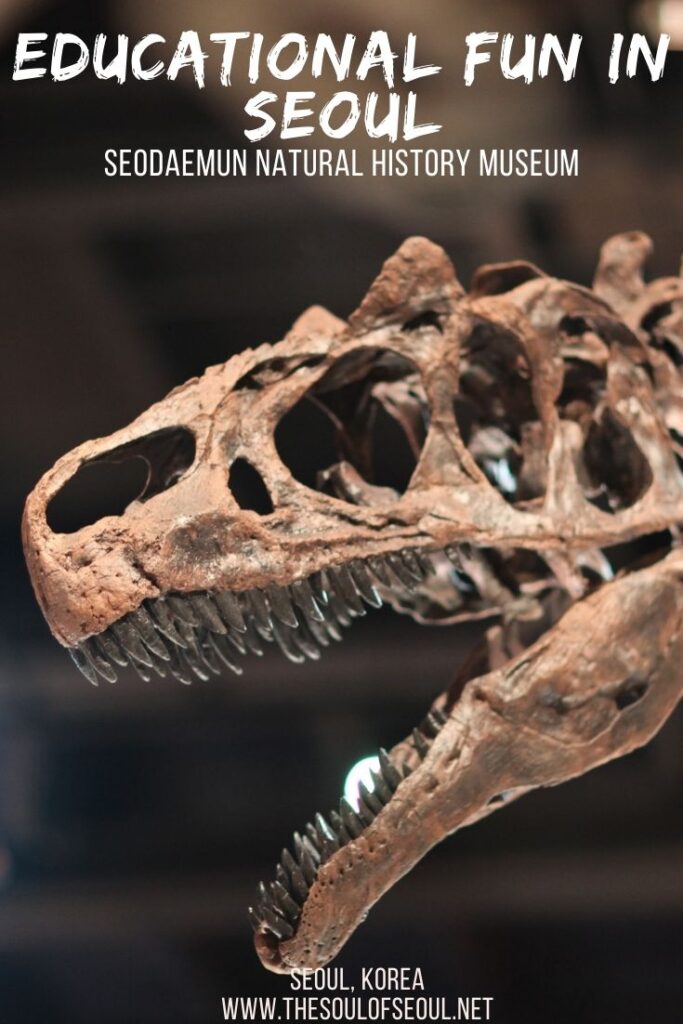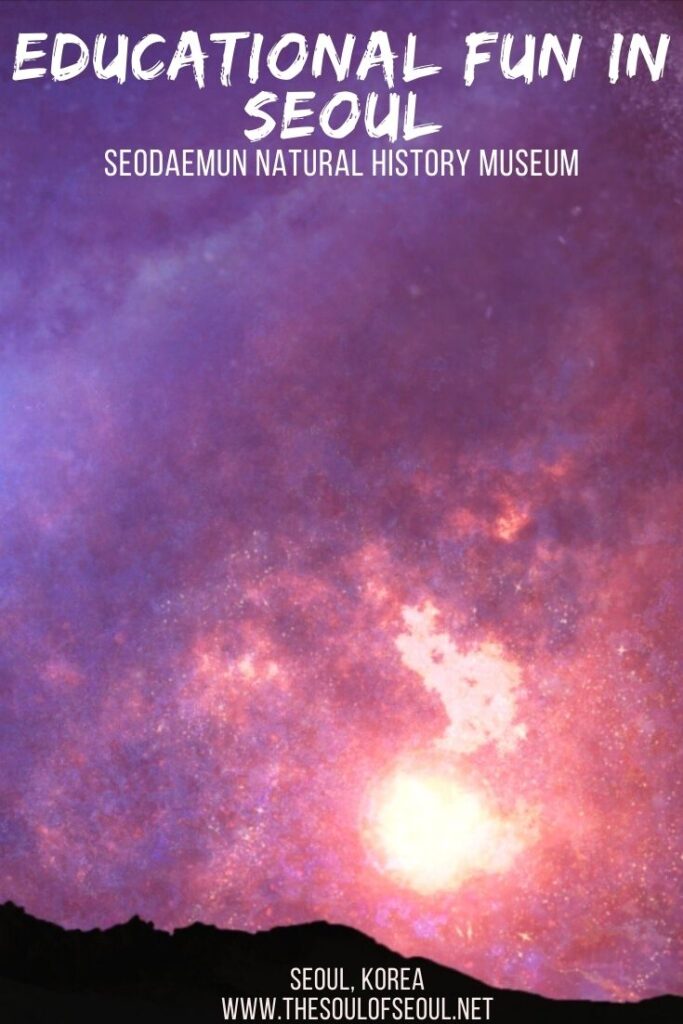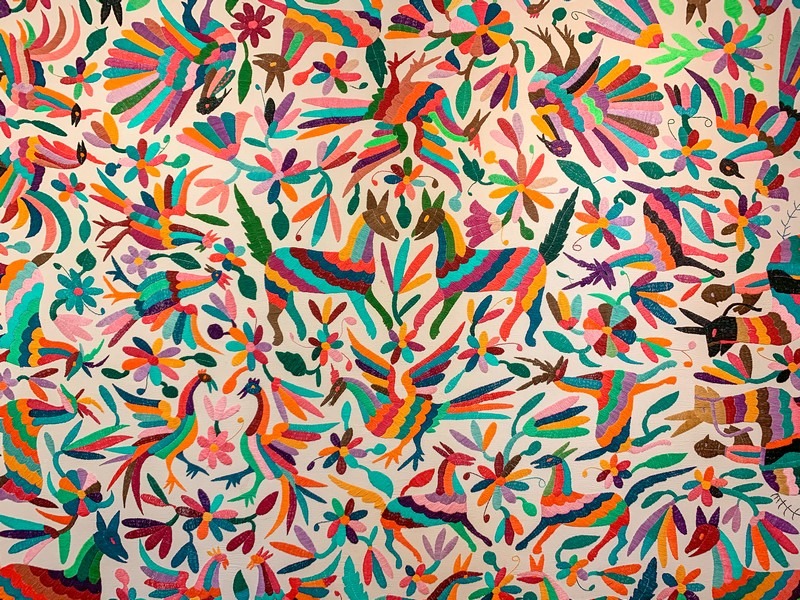Seodaemun Natural History Museum: Educational Fun In Seoul
Last Updated on April 4, 2024
Looking for a cool thing to do with kids in Seoul? Seodaemun Natural History Museum (서대문자연사박물관) is definitely up there on the list. This is a great museum which is in a bit of a hidden spot on Ansan Mountain.
This makes it a great daytrip option because you can combine a stop at the museum with a nice walk on the mountain. Here is what to expect when you visit Seodaemun Natural History Museum in Seoul.

Take a trip to the Seodaemun Naturan History Museum:
(This post contains affiliate links, which means I receive a certain percentage of a sale if you purchase after clicking at no cost to you. Thank you for your support.)
How To Get There
Address: 51 Yeonhui-ro 32-gil, Seodaemun-gu, Seoul (서울 서대문구 연희로32길 51)
By Public Transportation: From Sinchon Subway Station exit 4, get the short bus Seodaemun03 that is between exits 3 and 4. Get off at the Seodaemun Natural History Museum stop and walk straight in the same direction as the bus was headed and turn right on the first street. Walk up and follow the signs. The walk is about 266 meters.
Basic Info
Days: Open every day except Mondays, January 1st, Lunar New Year, Chuseok.
Hours: March ~ October: 9:00am ~ 6:00pm; November ~ February: 9:00am ~ 5:00pm
Admission: Adults: W6,000; Children: W2,000
Website: https://namu.sdm.go.kr/
Harmony of Human and Nature
Nestled up into Ansan Mountain where it’s definitely easy for most people to miss is a great spot to take kids to learn about natural history. The Seodaemun Natural History Museum is a four story building and is great if you have little people interested in dinosaurs, animals, and so much more.

Exhibitions are arranged in sequential order of time and space following the historical flow so that natural history will be easily understood and memorable. There is the ‘Harmony of Human and Nature in the Beautiful Seoul’ section to learn about ecosystems and then there is ‘The Birth and Evolution of Life and the Diversity of Living Creatures’ where the dinosaurs reside and that leads into the origin of humans and animals. Then as you travel up through the building, you come to a section to learn about the earth and the planets in the solar system.



We’ve visited this museum three times and love it. It’s also right on Ansan Mountain which means you can easily take a little walk around the mountain which is an easy one for kids as well since it has a wooden pathway that circles the mountain. There’s also a waterfall there too. It’s a great spot in Seoul to take kids.
Floor By Floor


The First Floor / Entrance
Walk into the first floor and you’ll see an awesome Acrocanthosaurus. Existing in the Early Cretaceous period (between 115 and 105 million years ago), Acrocanthosaurus is a genus of the family Allosauridae, approaching 9 to 12 meters in length and weighing 2 to 4 tons. As a bloodthirsty carnivorous dinosaur, Acrocanthosaurus is fierce enough to predate large Sauropod dinosaurs and even ate rotten meat. Its skull alone was 1.4 meters in length and its strong jaw is known to have helped the dinosaur bite off meat easily.

It is mainly characterized by the long sawtooth-like neural spines running from the neck to the tail. The spines most likely supported a ridge of muscle over its neck and tail and controlled its body temperature. Acrocanthosaurus was presumably able to grab its prey with the robust forefeet, bearing three sharp-clawed digits each. But given the long but weak hindlimbs, Acrocanthosaurus might not have been a fast runner.

Hanging above the dinosaur is a huge sperm whale. The Sperm whale is a mammal with a brain weighing around 8 kilograms (five times heavier than a human’s). Its society is matriarchal; females and babies live together in groups while grown males turn to solitary lifestyles. It can survive around 90 minutes without breathing, dive in up to 3,000 meters in depth and mainly feed on deep-sea fish and cephalopod (Giant squid in particular).

Hanging above is also a Pteranodon, a Tupuxuara, a Xiphactinus, and a Pachyrhizodus. Basically, you and your kids will want to look up and enjoy the view and the many educational opportunities right from the get go.



The first floor is also home to the Human and Nature Hall which houses endangered species, freshwater fish, insects, forest ecosystems, and other information about plants.

The Second Floor
The second floor kicks off with the Origin and Birth of Life section. When did lifeforms first appear on Earth? This is a question that everyone wants to know the answer to and a very difficult question for philosophers and theologians.


The scientists’ view is that lifeforms evolved and developed from lifeless forms. Four billion years ago, there was the sea and the atmosphere on Earth. Scientists believe that evolution started around that time. In the biological evolution, the history is relatively well explained from after 600 million years.
Walk through the Paleozoic Era, the Mesozoic, Cenozoic and see marine mammals, find out about the emergence of mankind, and see the various kinds of animals we live with today.



The Third Floor
The third floor, which is where you would actually start if you follow the ramp from the first floor all the way up and then work your way down, starts with the Earth Environment Hall and the birth of the Earth. Learn about the planets, rocks and minerals.
In the beginning, there was a big explosion in space. The gas created cloud formations in space, these gas clouds created planetesimals, and these planetesimals collided and broke off or combined to create the stars. This created the solar system, and Earth, and lifeforms grew on Earth and enabled humans to live on Earth.
In the corner of the Birth of Earth, you can view a stereoscopic movie of the creation process. It is shown every 10 minutes from 9 am to 5 pm, and the movies require special glasses. Please follow the instructions of the attendant.
We love visiting museums and finding awesome places for learning here in Seoul. This is an amazing museum with so much to learn for kids. Hope you enjoy it as much as we did.
Did you like this post? Pin It!



